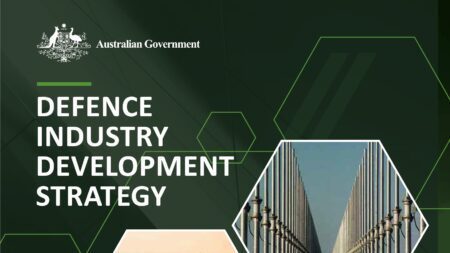Trusted Leadership
Trust in defence industry supply chains is at the heart of bolstering our national security. If we aspire to build trusted workforces and manage trusted insiders, the obvious place to start is with trusted leadership. But what is trust anyway? Science, theory, feelings or behaviour?
The Neuroscience of Trust
At the heart of the neuroscience of trust lies a fascinating interplay of brain functions, hormones, and neural pathways. When trust is established, a cascade of neurochemical events takes place within our brains. We release oxytocin, the ‘mother’s hormone’ or the ‘trust hormone’ which plays a pivotal role in fostering the feelings of empathy, connection, and bonding. Not only does oxytocin enhance our sense of trust it promotes prosocial behaviours, compassion, and cooperation, the very essence of human collaboration.
The prefrontal cortex is the part of our brain responsible for decision-making, risk analysis and our social behaviour, and is intricately involved in assessing the intentions and reliability of other humans. Through a delicate little dance between the prefrontal cortex and other brain regions such as the amygdala trust is evaluated, and judgments are formed based on past experiences, cues, and innate instincts. Can I trust you or not? Where’s the evidence?
In terms of evidence, bestselling author and inventor of the Trust Index David Horsager, claims trust can be understood by what it looks like through the lenses of his Eight Pillars of Trust: Clarity, Compassion, Character, Competency, Commitment, Connection, Contribution, and Consistency. In business, according to Horsager “A lack of trust is your biggest expense”. Without trust, transactions don’t happen, influence is destroyed, and leaders simply lose their best people. Trust can either be your most vulnerable weakness or your greatest asset.
Begin with Trust
Frances Frei and Anne Morriss, in their work “Begin with Trust” describe a simple yet profound framework for understanding trust around just three core pillars:
- Authenticity – am I experiencing the real you?
- Logic – how do I know you can do what you say you can; is your reasoning and judgement sound?
- Empathy – do I believe you care about me and my success too?
Paul J Zac in a Harvard Business Review piece synthesised multiple research findings in terms of the benefits of a trusted workplace to reveal that people who work in high-trust organisations report greater engagement, productivity, energy and satisfaction. They have less stress, fewer sick days and less burnout. You’re literally getting more doses of that feel-good brain chemical Oxytocin in high trust environments and consequently running a more profitable and productive business.
In distributed workforces and work from home/hybrid workplaces, trust becomes even more critical. Trusted Dream Teams perform at peak where trust is a given and micromanagement is not your thing. When you join WorkSec for instance, you’ve come on board as an adult, you’re a professional, you’ve passed the mandatory Employment Suitability Checks and hold a security clearance. Trust has been established, expectations are clear, reporting is robust, and communication lines are always open.
Bringing it home to the defence industry, to be deemed Trustworthy is one of the PSPF 12 six demonstrable character-slash-behavioural requirements to hold a security clearance. Security clearance holders have been vetted by AGSVA as being Trustworthy, Mature, Honest, Loyal, Tolerant and Resilient Australian citizens.
The Trusted Leader
To be a consistent and Trusted Leader however takes courage and grit. We are required to show up as our authentic selves, embodying all six of the aforementioned PSPF 12 behaviours, openly communicating both good and bad news, and be present with what’s going on with all stakeholders all at once, and we haven’t even started on the business as usual, the making of widgets or the delivery of services yet! Trusted Leadership is a big job and not one for the inauthentic or feint hearted.
Trusted Leaders all execute on the following four elements of cultivating and nurturing trust: the KNOW, SHARE, SEE, SHAPE formula as I describe it in my forthcoming book.
KNOW: The Ins and Outs
This maps back to Horsager’s Clarity and Competence Pillars. Your people need to trust that you know what’s going on and know what you’re doing. Get a 360-degree point of view on things: understand your operating environments, regulatory frameworks, and supply chains. Look ahead and get really real on risk across the board.
SHARE: Communicate Your Standards
Here we bring in the pillars of Character and Commitment. Let me know I can trust your values and vision. Clearly communicate all that you know: your standards, expectations, risks and mitigation strategies, and articulate exactly what trust looks like and how to nurture and protect it.
SEE: Collaborate and Correct
Horsager’s Connection and Compassion pillars come into play. Make me feel safe so that I can trust that you care. Cultivate a Trust Culture by providing a psychologically safe workplace. Champion your people to think, grow, learn, contribute and to challenge things, observe and report. Reward trusted actions and behaviours and nip everything else in the bud. Implement frameworks to support your trusted insider ethos.
SHAPE: Uplift and Scale
Finally, the last pillars of Contribution and Consistency. Dynamically and continuously uplift your operational procedures and tech enablement – and resource your teams properly. Check in with them often. Know how and when to pivot and scale.
Fostering Trust
Fostering trust in the face of rapid transformation requires acceptance that change management is no longer a project or consultant thing but a constant in our VUCA world. Agile, responsive and cohesive trusted workforces are the foundation to achieving our collective sovereign capability goals; trusted leadership is the light that shines the way.

Director Culture & Brand, author and strategist, shaping trusted leadership and thriving teams through transformation and growth.






